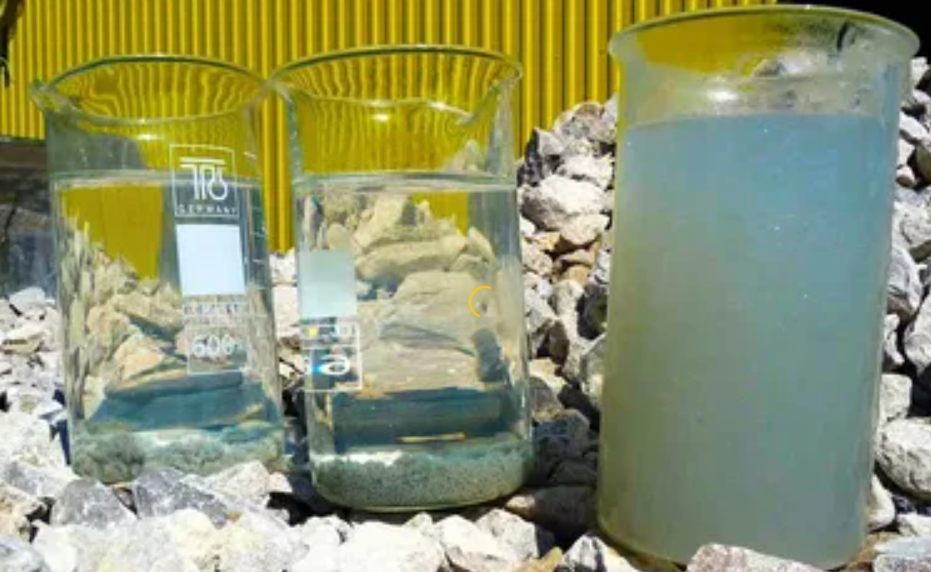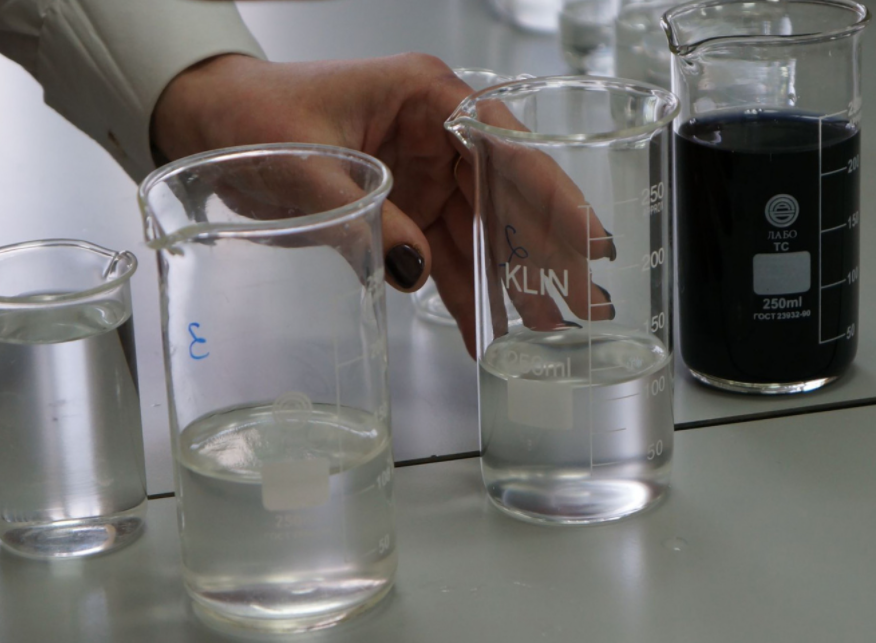On-line monitoring of volatile organic compounds in surface water To ensure the accuracy of the parameters, it is necessary to select the correct method. The most commonly used method in daily life is continuous purge and trap/gas chromatography. The detection limit of this method is 0.03ug/L-0.34ug/L, and it can perform qualitative and quantitative detection of 19 kinds of target substances.
Using gas chromatography to detect volatile organic compounds in water, the principle is to use argon or other inert gas (purging gas) to take out volatile organic compounds in the sample and adsorb and enrich them on the trapping column, and then quickly heat up the volatile organic compounds. The organic matter is decomposed and transferred to a gas chromatograph (GC) by argon or other inert gas (carrier gas), and is separated by a gas chromatographic column and then enters a chromatographic detector for detection and analysis. Qualitative by chromatographic retention time, quantitative by external standard method, the content of volatile organic compounds in water samples was determined.

Interference and cancellation
1. The material of the upper and lower water pipelines, connectors and glue will interfere with the analysis of volatile organic compounds. After new construction or pipeline renovation, the pipeline should be continuously flushed at the frequency of automatic water filling for at least one week, and the instrument should be calibrated. to continue running online for sample analysis.2. During the online operation, if there is an abnormal alarm, it is necessary to retain the sample and conduct laboratory analysis to confirm the type and concentration of the pollutants.
Reagents used for testing
1. Laboratory first-grade ultrapure waterBefore use, blank check is required to confirm that there is no interference peak within the retention time interval of the target compound or the concentration of the target compound is lower than the detection limit of the method.
2. Methanol: chromatographically pure.
3. 19 kinds of volatile organic compound standard stock solutions: the concentration of each component is 2000mg/L, commercially available certified standard solutions, and stored in accordance with the requirements of the instructions.
4. Volatile organic compound standard intermediate solution: the concentration of each component is ρ=2000µg/L, and the volatile organic compound standard stock solution is diluted with methanol.
5. Purge gas and carrier gas: argon (or other inert gas), purity ≥99.999%.

Instruments used for testing
1. Gas chromatograph: The sample transfer line is made of inert material. The temperature-programmable chromatographic column has a detector that can detect as low as ug/L, has real-time data upload and quality control functions, and has the function of automatically supplementing missing data after network and circuit failures are restored.2. Purge and trap device: It can be directly connected to a gas chromatograph, and has the functions of measuring water temperature sensor and setting headspace time, pipeline purification time and sampling time. With adsorption tube and thermal desorption function. The adsorbent is Tenax GR/silica gel/activated carbon ternary composite adsorbent, or other equivalent adsorbent.
3. Capillary column: HP-1 30m×0.32mm×4.0um (100% dimethylpolysiloxane stationary phase), or use other equivalent capillary column.
4. Micro syringe: 100L; graduated pipette: 1ml, 2ml, 5ml and 10ml.
5. Sampling cup: with water inlet, water outlet and overflow, it can quantitatively 1.5L for automatic sample collection.
6. General laboratory instruments and equipment.
Water sample collection method
Prepare sampling vessels according to the relevant requirements for volatile organic compound water samples in relevant standards, collect surface water samples manually, pour them into the sampling cup of the instrument, or collect samples into the sampling cup of the instrument with the water sampling unit of the automatic water quality monitoring system. Monitor the sampling cup for fresh water samples. After sample collection, the instrument is manually activated or the instrument automatically begins the analysis process.Detection process
Instrument Reference Conditions
Purge and trap reference conditionsPurge temperature: normal temperature
Purge flow rate: 115-125mL/min
Purge time: 60s
Desorption temperature: 300℃
Dry blowing temperature: normal temperature
Dry blowing time: 3min
Gas Chromatography Reference Conditions
Program temperature: initial temperature 60°C, hold for 1 minute, 4°C/minute to 90°C, then 6°C/minute to 135°C, and finally 20°C/minute to 200°C, hold for 45 seconds, the heating process is 20 minute; valve temperature: 50°C; carrier gas pressure: 620 psi; detector temperature: 80°C. The rest of the parameters are set according to the instrument instruction manual.Other instruments that meet the requirements can set relevant parameters according to their own characteristics or instructions.
Instrument calibration
The calibration curve needs to be drawn when the instrument is used for the first time, or the instrument is repaired, replaced by a column, or fails to be continuously calibrated, and when the quality control is necessary.Instrument performance check
After starting up, first check the instrument performance of the instrument system, and run the corresponding inspection according to the instrument manual. In order to ensure the accuracy of the test results, the analysis results should be checked through the built-in check standard sample or the configured standard sample before sample preparation, and the accuracy of the instrument should be determined, and the requirements for the use of the instrument should be met.Establishment of calibration curve
The standard solution was diluted step by step to prepare standard series solutions with target compound mass concentrations of 0g/L, 1g/L, 2g/L, 5g/L, 10g/L and 20g/L respectively. The prepared standard series of samples are mixed evenly, and according to the reference conditions of the instrument, the samples are sequentially injected and analyzed from low concentration to high concentration, and the retention time and peak area response value of the standard series of target compounds are recorded. Take the mass concentration of the target compound as the abscissa and the quantitative peak area response value of the target compound as the ordinate to establish a calibration curve.water sample testing
The collected water samples were measured according to the same instrument conditions as the establishment of the calibration curve. However, it should be noted that in manual analysis, after analyzing a high concentration sample, one or more blank samples should be analyzed to prevent cross-contamination.The qualitative detection result of the water sample can be used to characterize the target compound according to the comparison of the retention time of the target compound with the target compound in the standard series. The quantitative detection result can be calculated according to the response value of the peak area within the retention time of the target compound to quantify the target compound. The mass concentration of the target compound in the water sample can be obtained from the calibration curve, and then the final result can be calculated according to the corresponding formula.



